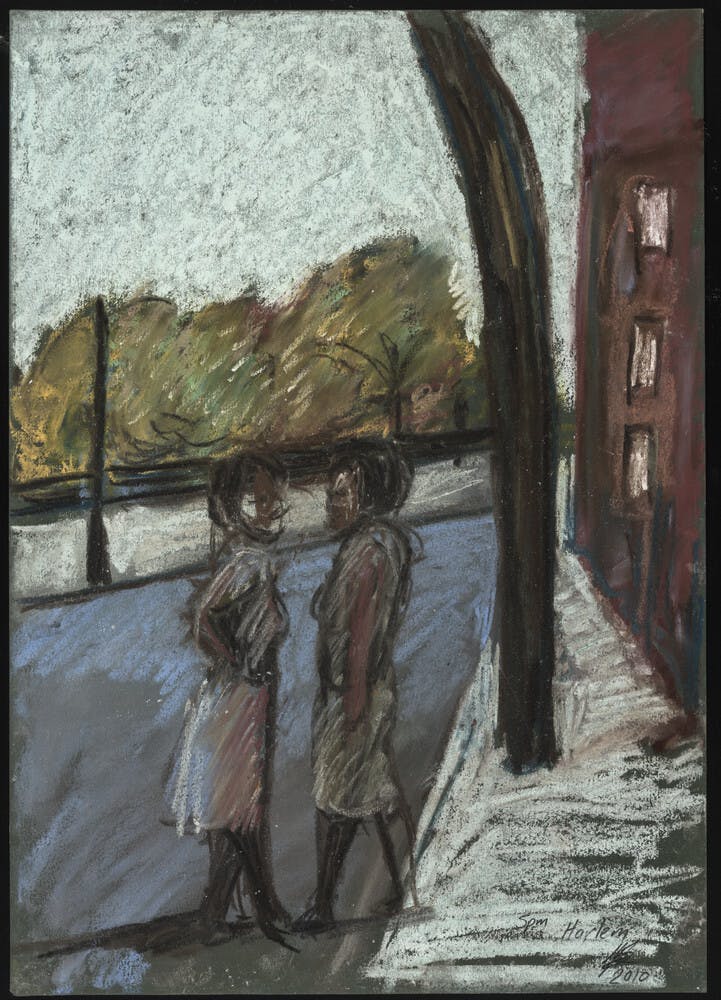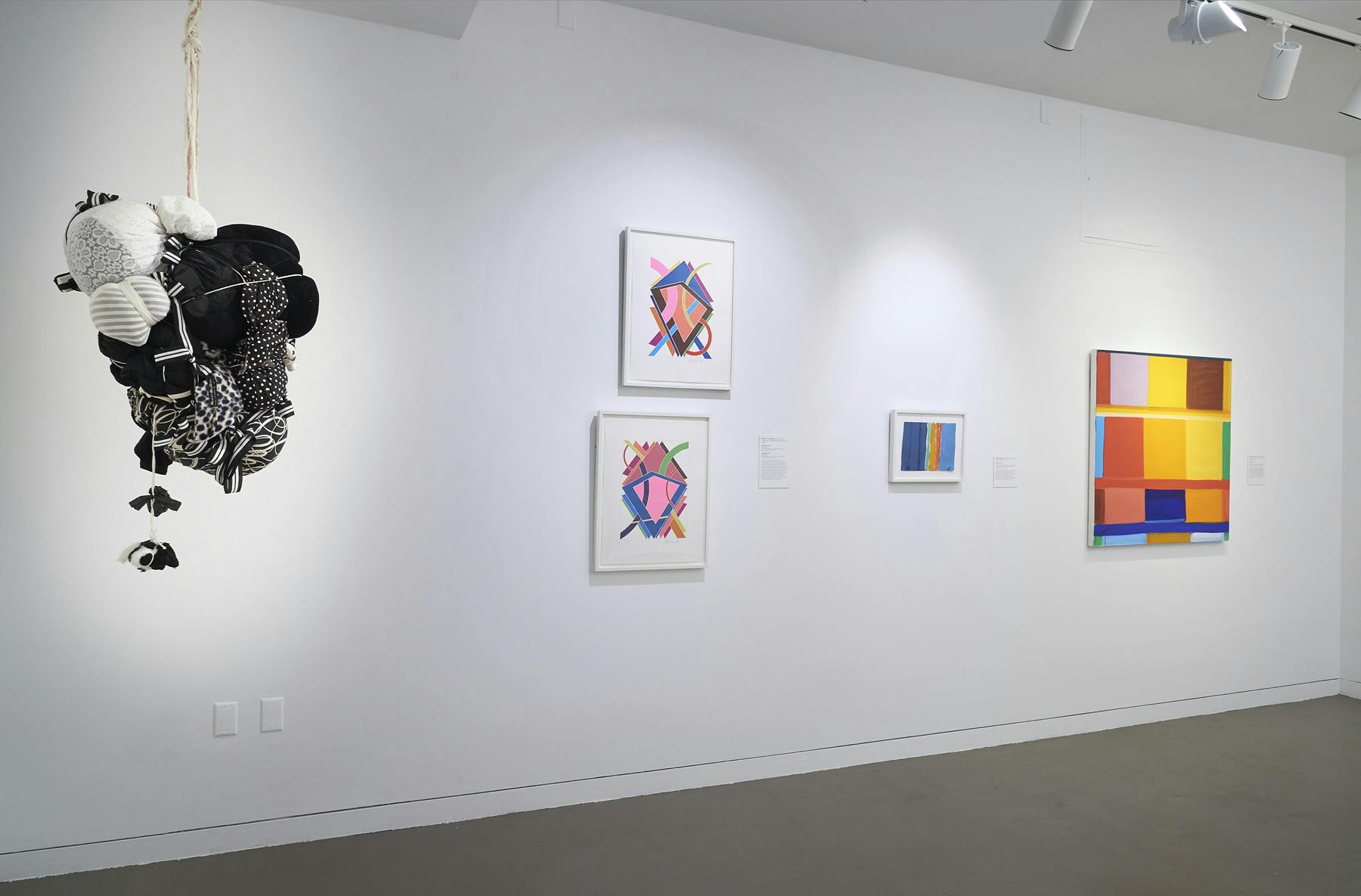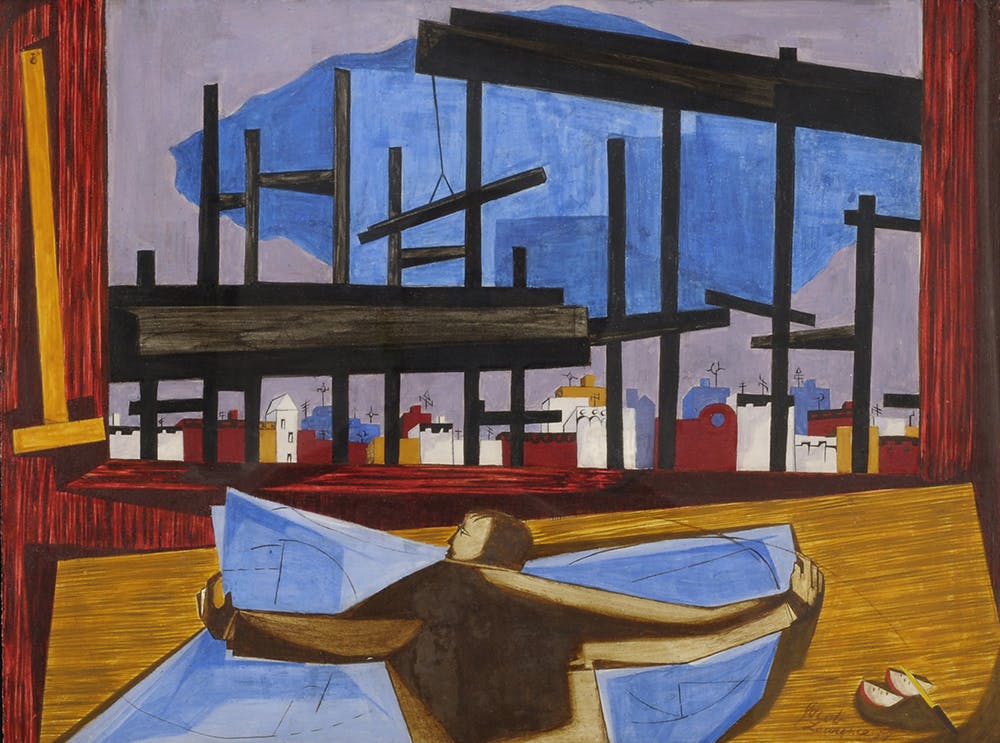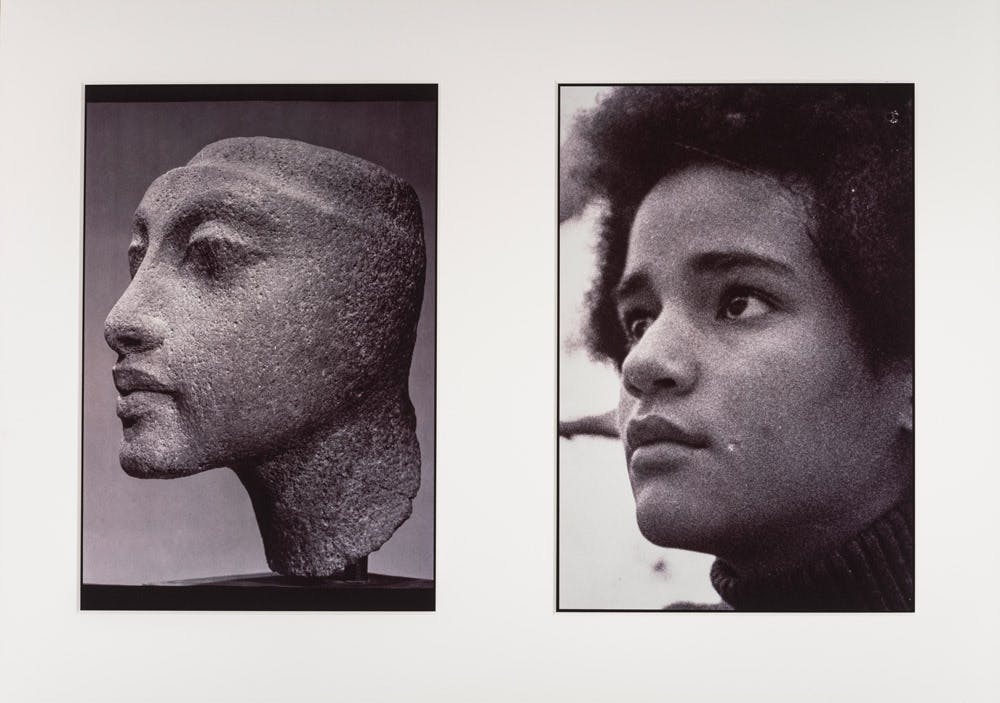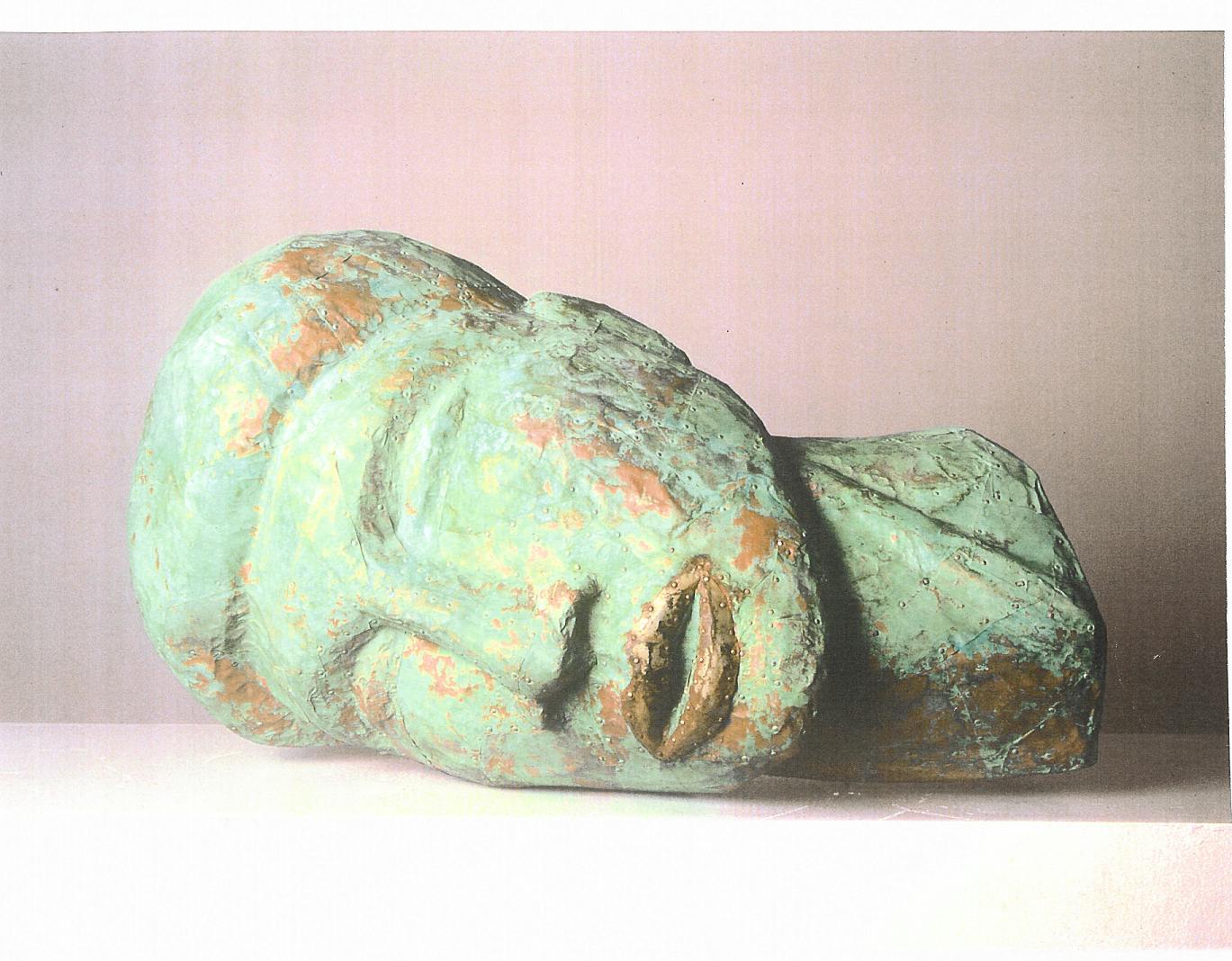Lynette Yiadom-Boakye
(b. 1977)The paintings of Lynette Yiadom-Boakye depict fictional figures unconnected to a specific time or place.
Biography
Lynette Yiadom-Boakye’s approach uses subtlety, seduction, and ambiguity to challenge expectations of Blackness in art and call into question its historical representations.
After an interest in optometry, Yiadom-Boakye found her way to art, a different but related study of visual phenomena. While she learned to paint using scenes and objects from her everyday life, she adjusted her approach while studying at Falmouth College of the Arts. There, she realized her interests lay not only in making portraits of people but in the act of painting itself. She says, “People are tempted to politicize the fact that I paint black figures, and the complexity of this is an essential part of the work. But my starting point is always the language of painting itself and how that relates to the subject matter.”1
Yiadom-Boakye finds inspiration in found images, memories, and literature. Despite her traditional use of line, color, and scale, her subjects and techniques are completely contemporary, resulting in portraits of people that draw on elements from many sources and the artist’s imagination. Her approach uses subtlety, seduction, and ambiguity to challenge expectations of Blackness in art and call into question its historical representations. The mysterious aura of her works conveys both familiarity and distance: they are grounded in history but allow the viewer to create their own unique interpretations and raise questions of Black identity and representation.
Yiadom-Boakye attended Central Saint Martins College of Art and Design, Falmouth College of Arts, and the Royal Academy Schools. She was shortlisted for the Turner Prize (2013) and is the 2018 recipient of the Carnegie Prize. Her work was featured in Ghana’s inaugural pavilion at the Venice Biennale, in 2017. The Studio Museum presented her work in exhibitions such as Lynette Yiadom-Boakye: Any Number of Preoccupations (2010–11); Regarding the Figure (2017); and Their Own Harlems (2017–18).
1) “Lynette Yiadom-Boakye,” Jack Shainman Gallery, accessed November 1, 2022, jackshainman.com/artists/lynette_yiadom_boakye.
Exhibitions and Events
Lynette Yiadom-Boakye
(b. 1977)The paintings of Lynette Yiadom-Boakye depict fictional figures unconnected to a specific time or place.
No Head for Violence, 2011
Biography
Lynette Yiadom-Boakye’s approach uses subtlety, seduction, and ambiguity to challenge expectations of Blackness in art and call into question its historical representations.
After an interest in optometry, Yiadom-Boakye found her way to art, a different but related study of visual phenomena. While she learned to paint using scenes and objects from her everyday life, she adjusted her approach while studying at Falmouth College of the Arts. There, she realized her interests lay not only in making portraits of people but in the act of painting itself. She says, “People are tempted to politicize the fact that I paint black figures, and the complexity of this is an essential part of the work. But my starting point is always the language of painting itself and how that relates to the subject matter.”1
Yiadom-Boakye finds inspiration in found images, memories, and literature. Despite her traditional use of line, color, and scale, her subjects and techniques are completely contemporary, resulting in portraits of people that draw on elements from many sources and the artist’s imagination. Her approach uses subtlety, seduction, and ambiguity to challenge expectations of Blackness in art and call into question its historical representations. The mysterious aura of her works conveys both familiarity and distance: they are grounded in history but allow the viewer to create their own unique interpretations and raise questions of Black identity and representation.
Yiadom-Boakye attended Central Saint Martins College of Art and Design, Falmouth College of Arts, and the Royal Academy Schools. She was shortlisted for the Turner Prize (2013) and is the 2018 recipient of the Carnegie Prize. Her work was featured in Ghana’s inaugural pavilion at the Venice Biennale, in 2017. The Studio Museum presented her work in exhibitions such as Lynette Yiadom-Boakye: Any Number of Preoccupations (2010–11); Regarding the Figure (2017); and Their Own Harlems (2017–18).
1) “Lynette Yiadom-Boakye,” Jack Shainman Gallery, accessed November 1, 2022, jackshainman.com/artists/lynette_yiadom_boakye.


